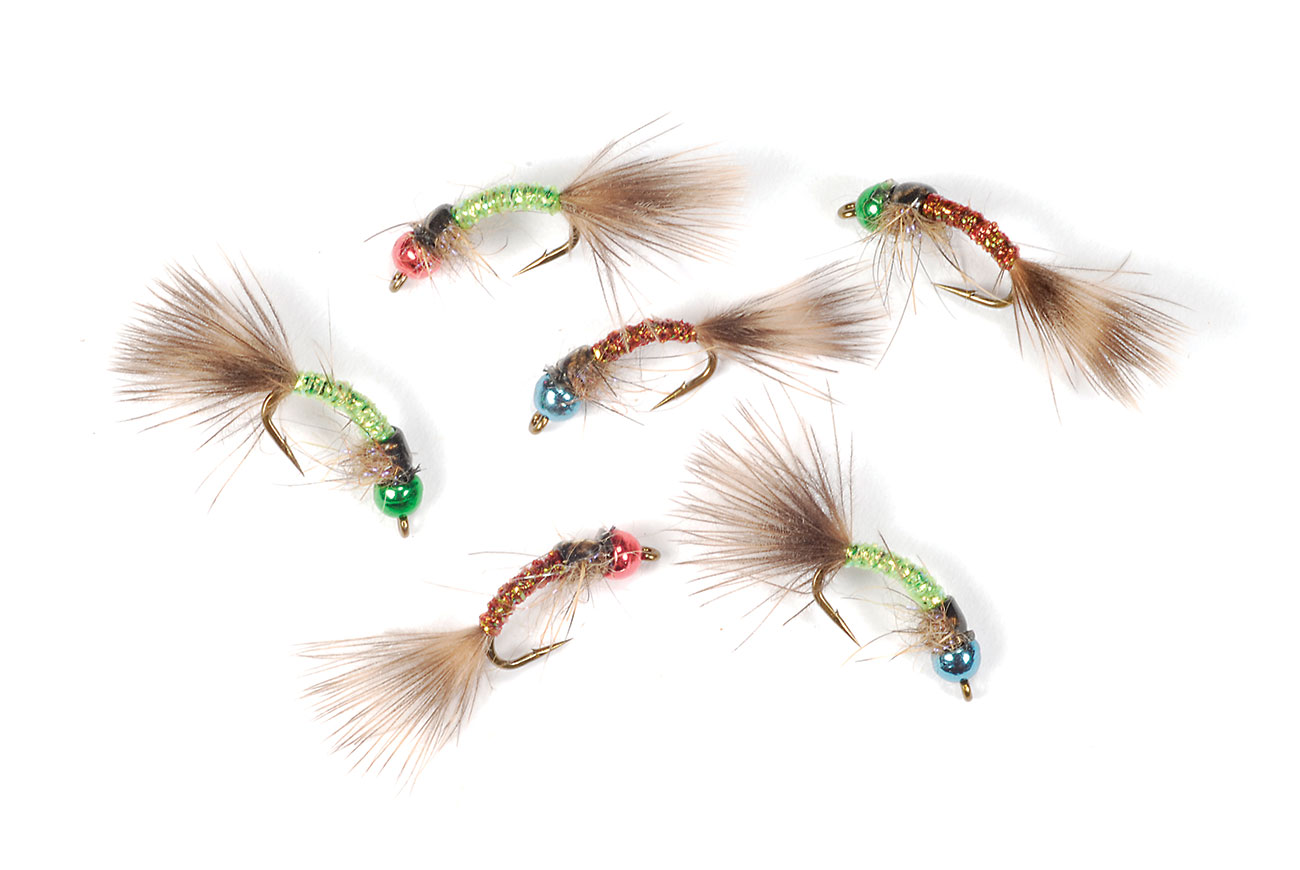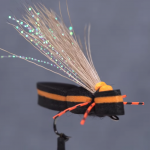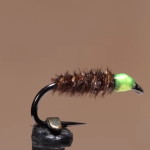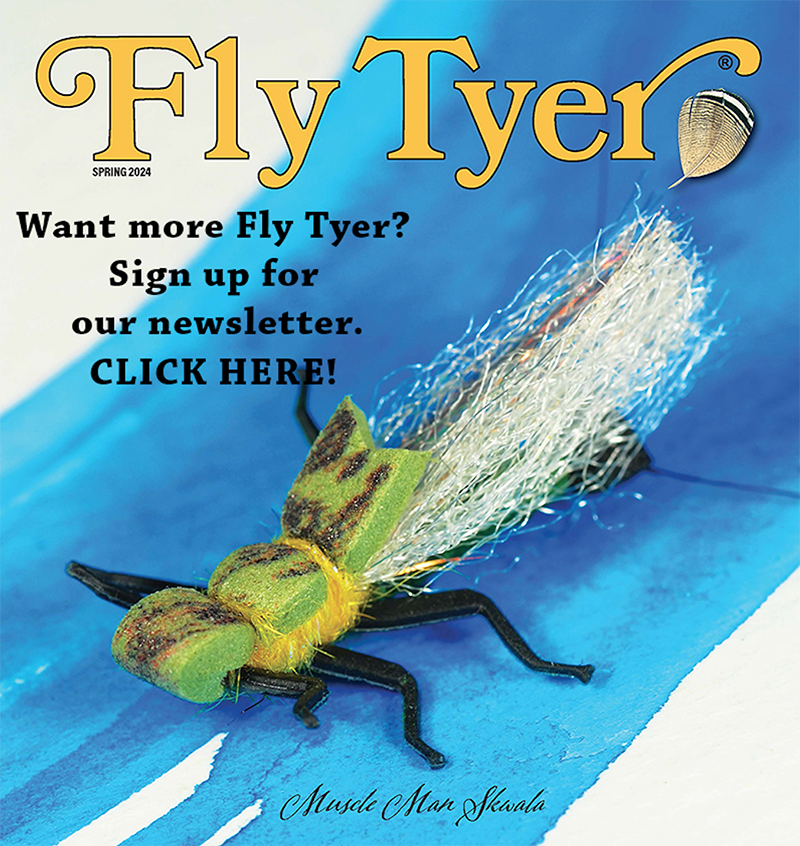How to turn a time-tested pattern into a fish-catching machine.
[by Vince Wilcox]
Most fly tiers, anglers, and guides appreciate patterns that are inexpensive and quick to tie. They also like flies that work throughout the entire season no matter where they are fishing. The Marabare meets all these expectations.
Oftentimes, when I sit at the bench to create a new fly, I incorporate the ideas and materials from established successful patterns. The traditional Hare’s-Ear Nymph is one such fly that remains effective throughout the season and is quick and inexpensive to tie. With the traditional Hare’s-Ear in mind, I sat at the bench to create an even more effective version of the century-old classic.
How to Improve an Established Pattern
The first question you should ask when starting with an established pattern is this: What makes that fly so successful? With respect to the Hare’s-Ear Nymph, I concluded that the guard hairs from the hare’s-mask dubbing create a buggy appearance the fish can’t resist. It seemed logical that I could maintain the effect by constructing the thorax using my Lint Bug dubbing. Lint Bug dubbing is a blend of natural fibers and UV Ice Dub. (You may substitute Hare’e Ice Dub or a similar product. Ask for recommendations at your local fly shop.)
The Midge Braid abdomen gives the fly a lifelike sheen lacking in the original Hare’s-Ear Nymph. The majority of my patterns possess this sheen; Fly Fishing Masters champion Frank Smethurst calls it a “curious sparkle.” That sparkle is best described by inventing a new term, refractolucivity. Refractolucivity is the ability of an object or material to absorb and refract or bend light while enhancing its own natural color. You won’t find refractolucivity in Webster’s dictionary, but it is the best way to explain why this effective material is so hard to accurately photograph.
Departing from the Hare’s-Ear design, I felt I could make the tail better mimic the swimming motion of a nymph struggling to the surface of the water. Grizzly marabou is an excellent tailing material for nymph imitations. Selective trout will refuse offerings that appear too rigid, and the waving motion of marabou is a trigger that encourages those fish to strike.
Combining the words marabou and hare, I call my new pattern the Marabare.
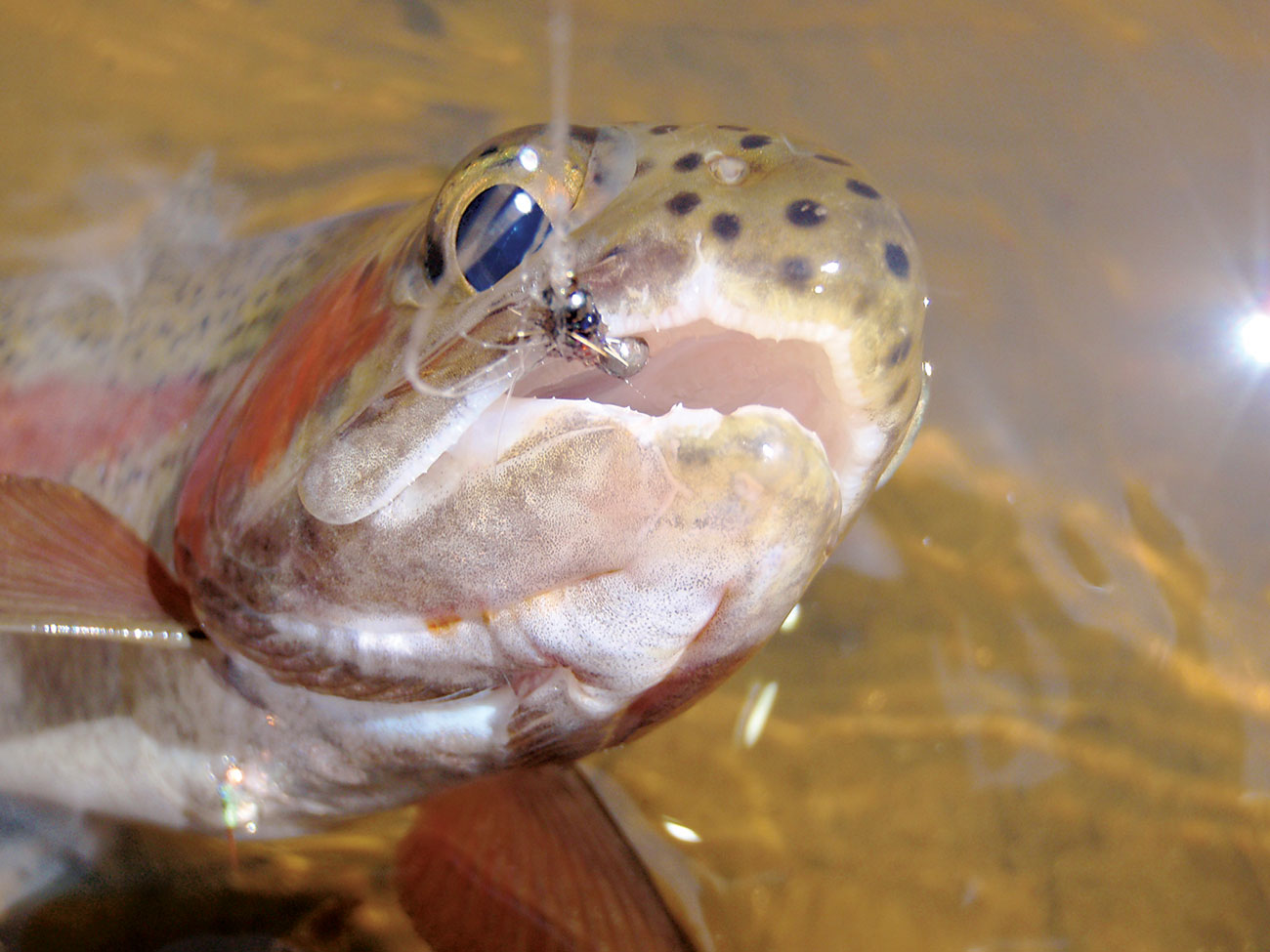
The author created a new can’t-miss pattern by combining the best attributes of the Hare’s-Ear Nymph and new fly tying materials. (photo by Vince WIlcox)
The Anytime, Anywhere Fly
I remember telling my fishing partner, “I just tied a fly that I am going to fish all the time and everywhere, and I’ll knock the snot out of them!”
The Marabare is an excellent searching pattern, meaning if you are not sure what fly to use, it will match enough different insects to represent something in the water and pick up trout. As with most nymphs, fish the Marabare bouncing on or just above the bottom. The tungsten bead head will get the fly down into the feeding zone without adding extra weight to your leader. The beads I use are anodized, so the color will not chip off or fade.
With the outlawing of lead shot in many watersheds throughout the country, tungsten beads are becoming more prevalent in the fly tying world. The growing number of anglers discovering European nymph-fishing techniques is another reason for the explosion in the use of tungsten beads. These fishing methods have been used for centuries by anglers all over the world, but with the recent spotlight on them, more fishermen are learning what good nymph anglers have always known: Get the fly down! Using a tungsten bead does increase the initial cost of tying a pattern, but the added cost of the bead is offset by the time saved on the water not adding supplementary weight to your leader, and when you lose a rig, you are not replacing that additional shot.
RUST MARABARE
Hook: Mustad C49S, sizes 18 to 12.
Bead: Bright red.
Thread: Black 8/0 (70 denier).
Tail: Tan grizzly marabou.
Abdomen: Rust Midge Diamond Braid.
Wing case: Natural bustard Thin Skin.
Thorax: Lint Bug Dubbing, or you may substitute Hare’e Ice Dub or a similar dubbing.
Tying the Rust Marabare
The weighted Marabare is an ideal pattern to fish in a dry fly–dropper combination. It is one of my favorite patterns to use with clients as a dropper beneath a large dry fly like the JC Special. It has the perfect amount of weight to get down quickly into pocket water, where it might drift only a couple of feet. Since it is effective all the time and doesn’t require additional weight, it saves time on the water and makes me look good.
When fishing runs that are two to four feet deep, I usually tie a three- to four-foot-long piece of 5X tippet material to the hook bend of the dry fly for the dropper. Trout might come up and eat the fly just below the surface, but increasing the length of the dropper will give you the ability to present the Marabare to fish that are feeding just off the bottom.
Although the Marabare might not replace all the Hare’s-Ear Nymphs in your fly box, it certainly has done so in mine as well as in the boxes of many of my customers. Tie and fish the Marabare, and it will find a permanent place in your fishing kit, too.
Vince Wilcox is a longtime contributor to this magazine. Vince is also a guide and professional fly designer. He owns a fly shop called Wiley’s Flies in Ray Brook, New York, near the Ausable River. For more information, go to www.wileysflies.com.
